 中
中
 400-9667-009
400-9667-009
 中
中
 400-9667-009
400-9667-009
The electric vehicle market has exploded in the past three years. This electrification requires very large battery packs, the production of which requires a lot of welding.
In addition to the electrification of motor vehicles, the demand for electronic devices continues to grow at an astonishing rate, from home storage units for solar panels to industrial storage units, handheld storage devices, backup battery units, computers, mobile phones and tablets. Most of these devices use copper or aluminum, which is difficult to weld with infrared (IR) lasers, especially copper or aluminum foil. Just a few years ago, visible wavelength lasers were very expensive and lacked durability for high-utilization industrial manufacturing. However, after the development of the past few years, visible wavelength lasers now provide high beam quality, industrial stability and attractive price.
TRUMPF is a full-source supplier of industrial OEM lasers, providing a wide range of laser products including CO2, fiber, disk, diode, rod, continuous wave, pulsed and ultrafast lasers, which gives TRUMPF great flexibility to research applications to determine the best laser source for processing materials. Take electric vehicles as an example. For their batteries, motors and power distribution networks, TRUMPF uses five different types of lasers, one of which is a green wavelength laser.
Let's take a look at why visible wavelength lasers are so popular. It all starts with copper absorption (see Figure 1); copper absorbs only 1% to 5% of near-infrared lasers, depending on the surface conditions of the copper (such as polishing, oxidation, cleaning, etc.), while copper absorbs visible light at room temperature. Up to 40% to 45%, regardless of surface conditions.
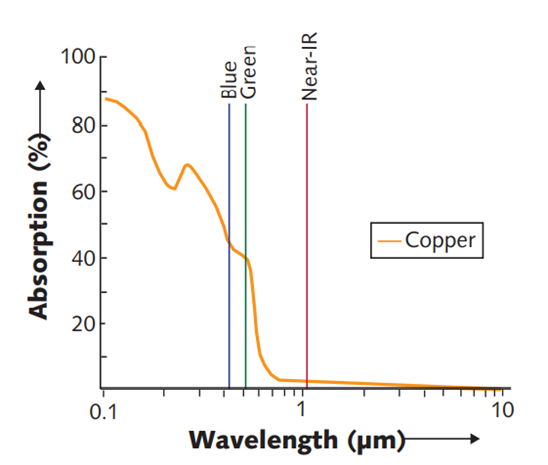
Figure 1: Wavelength absorption of copper at room temperature.
Absorption:吸收 Wavelength:波长 Blue:蓝光 Green:绿光 Near-IR:近红外 Copper:铜
Figure 2 shows the absorption of 1064nm infrared laser by copper. As can be seen from the figure, as the melting temperature gradually increases, before the temperature reaches the melting point of copper, the absorption of infrared light by copper is between 5% and 10%; after copper reaches the melting point, the absorption jumps sharply to about 17%. This huge spike usually produces a violent reaction, causing some of the molten material to be discharged in the form of splashes. In many cases, this causes the keyhole to collapse, forcing the entire process to start over.
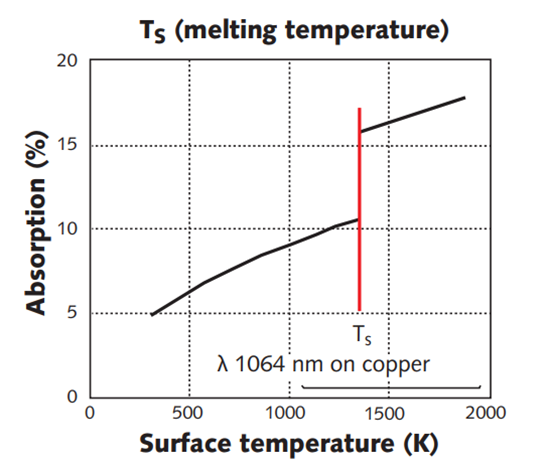
Figure 2: Changes in the absorption of infrared laser light when copper changes from solid to molten state during the formation of small holes. (Image source: S. Amorosi,T. C.Sidler,R. P. Salathe,H. P. Schwob 和 J. Hertzberg,Proc. SPIE [2003];https://doi.org/10.1117/12.540460)
Absorption:吸收 Surface temperature:表面温度 melting temperature:熔化温度
Advantages of Green Lasers
Since copper has a high initial absorption in the green wavelengths, a few percent change in absorption is not a big deal and allows for more fine control of the process. Figure 3 gives another breakdown of the welding process, showing the absorption of copper after it transitions from solid to molten state, and clearly shows that copper's absorption of visible wavelengths has the opposite effect to its absorption of infrared light, i.e., the absorption of visible light decreases slightly after copper melts. This feature helps to obtain stable small holes when machining copper with almost zero spatter.
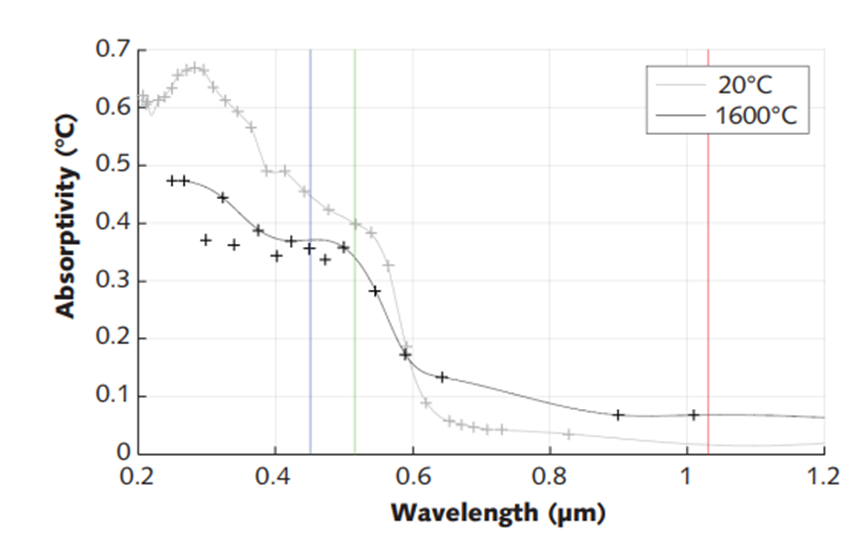
Figure 3: Absorption of visible light by copper in the solid and molten state. (Image source: S. Kohl, Institute of Photonics, Germany)
Absorption:吸收 Wavelength:波长
So where do green lasers excel? In short, conduction welding of copper, thin foil welding of copper, and basically any copper welding application that requires spatter-free or requires controlled heat input and weld depth. Traditional welding is usually about strength and appearance, but in electrified processing, conductivity/low resistance is just as important, and in many cases more important than strength.
Welding thin copper foil stacks is a perfect application for green lasers. By thin foil stacks, I mean 5-25μm thick foils and typical stacks of 10-100 sheets, with any stack of three or more being ideal. As with all laser welding, gaps between layers are an issue, so a clamping method that eliminates gaps is critical to successful laser welding. With infrared lasers, small holes need to be created to get consistent absorption, as absorption varies greatly with temperature and the process is very unstable. Small holes are very volatile, and as spatter is ejected, there may also be barely melted material bridging small gaps, causing the upper layer to be cut through, so good electrical contact cannot be made.
For green wavelengths, there is controlled absorption in the process and heat conduction welding or stable keyholes can be used for thicker stacks, with the result that there is no spatter and all the molten material is able to help fill any gaps, providing an ideal weld. Figure 4 shows a cross section of 100 pieces of 6µm thick copper foil welded to two 0.5mm copper busbars. This was done with a 2kW green laser using a galvanometer scan head to create a motion pattern to optimize the weld. The weld was 10mm long and took 477ms to weld; the weld point is outlined in black for easier viewing.
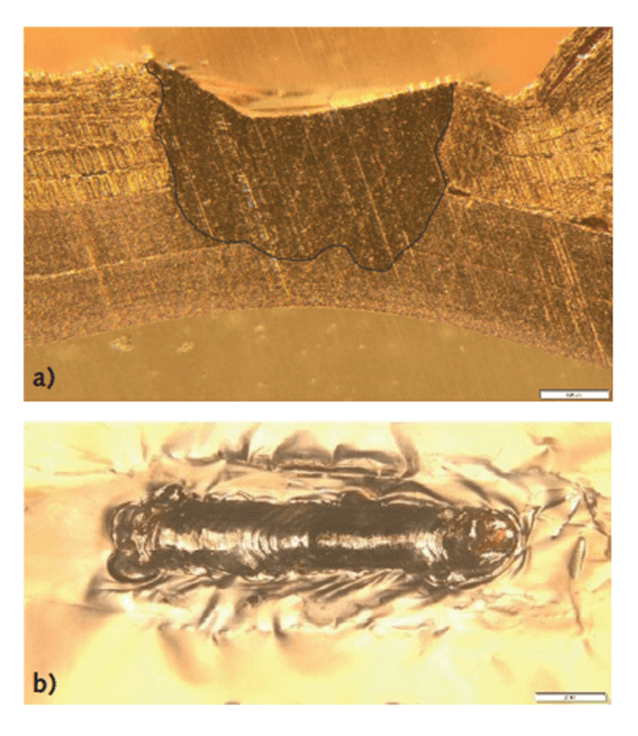
Figure 4: Soldered copper foil stack, showing cross section (a) and top view (b).
Finished electronic components with minimal heat input and the elimination of spatter are critical at this stage of processing, as scrapping finished parts is very expensive (see Figure 5). In direct copper bonding (DCB), both process control and heat input are critical. Depth control is required when soldering copper contacts to very thin layers of copper bonded to ceramic; full penetration and excessive heat input can damage the ceramic, so consistent heat conduction soldering is required. Due to the varying absorption of near-infrared light, it is difficult to produce partial penetration welds, and consistency in production is a big issue, which is where visible light excels. Absorption is very consistent, resulting in repeatable penetration depths and no spatter.
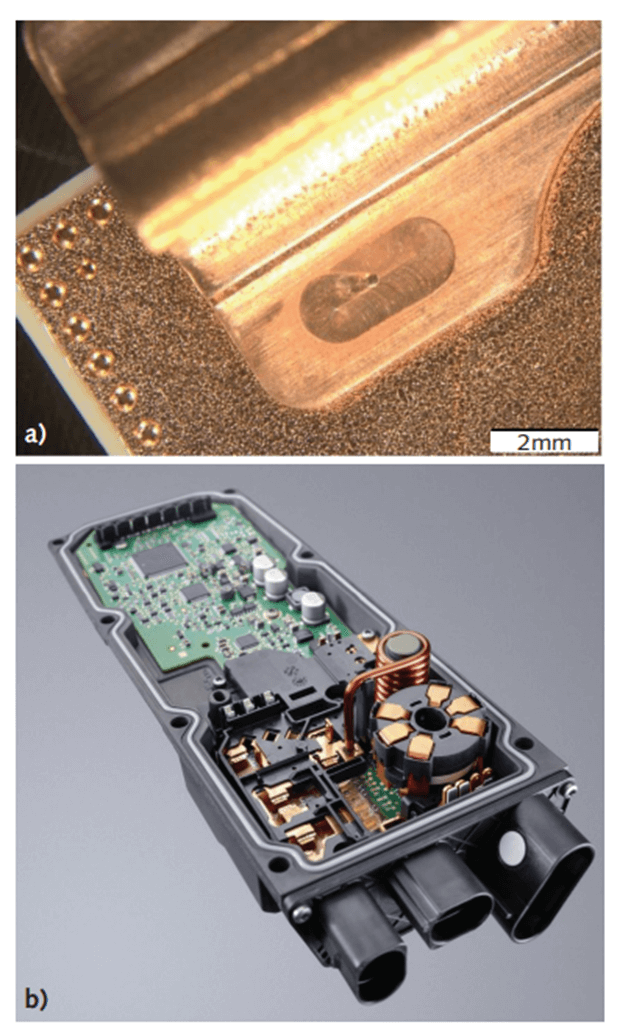
Figure 5: Soldering copper contacts on the direct copper bonding board (a) and control module (b).
Other examples include circuit boards, control circuits, and power distribution/charging components; again, process control and heat input are important, but eliminating splash is critical in these applications. A small splashing ball can cause a catastrophic short circuit in a product, damaging parts or even creating a hazard to nearby personnel.
Application Growth
Exciting emerging markets for 3D printing are laser metal deposition (LMD) and laser metal fusion (LMF) of copper (see Figure 6). 3D printing is not a fast process, and most of the focus is on prototype parts. It can be used to print configurations that cannot be built in any other way, print high-end parts with extraordinary strength and amazing light weight, and manufacture expensive materials. Processing copper with infrared lasers in 3D printing is not ideal due to process fluctuations, poor repeatability, and slow processing speeds. In contrast, using green lasers, a very stable and repeatable process can be achieved, achieving low heat input and fast processing speeds.
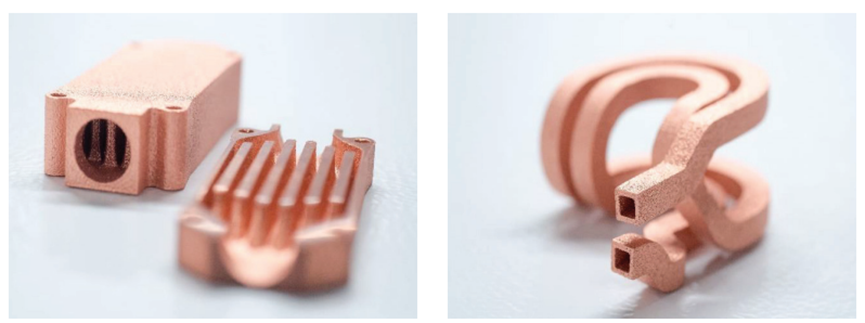
Figure 6: Copper component 3D printed with green laser.
Conclusion
As battery technology becomes more prevalent and vehicle electrification continues to increase, copper and aluminum processing will be at the forefront in the coming years. Green lasers will be an important tool in this processing revolution. Copper's high absorption rate (greater than 40%) and its insensitivity to varying surface conditions make green lasers the perfect choice for process stability and manufacturing flexibility. This is critical for welding battery foils, welding foil to busbars, controlling the depth and heat of copper mounted on ceramic insulators, etc. When welding on a completed circuit, low heat input, consistent penetration depth and no spatter are key, as having to scrap expensive parts due to thermal damage or electrical shorts caused by weld spatter is not a wise option. As new lasers are developed and processes are improved, green lasers will play an important role in the growing electrification market.